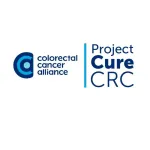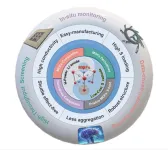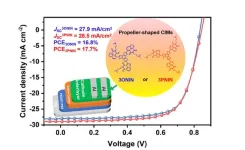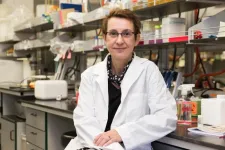Imaging grain boundaries that impede lithium-ion migration in solid-state batteries
New technique developed to quantify ionic conductivity across grain boundaries
2024-02-27
(Press-News.org)
1. A NIMS research team has developed a new technique to image grain boundaries obstructing lithium-ion migration in solid-state batteries—a promising type of next-generation battery.
2. Solid-state batteries—next-generation rechargeable batteries—are intended to be safer and have higher energy densities than conventional lithium-ion batteries by replacing liquid organic electrolytes with solid electrolytes. A major issue in current solid-state battery R&D is the obstruction of lithium-ion migration at the interfaces between active materials and solid electrolytes and at the grain boundaries within solid electrolytes. These obstructions lower charge/discharge rates and reduce energy density in batteries. A solid electrolyte is composed of crystalline grains and the boundaries between them. Existing ionic conductivity evaluation methods had only been able to measure average ionic conductivity across a solid electrolyte and were unable to quantify ionic conductivity at individual grain boundaries and identify boundaries restricting ionic migration.
3. This research team succeeded in imaging and quantifying ionic migration/diffusion at individual grain boundaries within a solid electrolyte using secondary ion mass spectrometry (SIMS). SIMS enables the imaging of chemical element distribution across a solid electrolyte specimen by sputtering the surface of the specimen with a focused primary ion beam and collecting and analyzing ejected secondary ions. The team first replaced a portion of a stable lithium isotope, 7Li (mass number: 7, natural abundance: 92%), constituting an electrolyte specimen with another lithium isotope, 6Li (mass number: 6, natural abundance: 8%), at the edge of the specimen using an isotope exchange technique. The team then observed the diffusion of 6Li within the specimen using SIMS. Because it was impossible to image and quantify the distribution of fast-diffusing 6Li using conventional SIMS, the team significantly slowed 6Li diffusion by cooling the specimen (i.e., cryo-SIMS), enabling the team to precisely measure the 6Li distribution and identify grain boundaries acting as bottlenecks to ionic migration.
4. The cryo-SIMS technique can be used to directly observe lithium-ion diffusion, identify interfaces/grain boundaries acting as bottlenecks among the many interfaces/boundaries existing in a solid-state battery and determine the causes of these obstructions. This approach is expected to contribute to the development of higher-performance solid-state batteries.
***
5. This research was carried out by a research team led by Gen Hasegawa (Postdoctoral Researcher, Battery Interface Control Group, Research Center for Energy and Environmental Materials (GREEN), NIMS) and Naoaki Kuwata (Principal Researcher, Battery Interface Control Group, GREEN, NIMS).
This work was supported by JST’s ALCA-SPRING program (grant number: JPMJAL1301), the JSPS Grant-in-Aid for Scientific Research on Innovative Areas (grant number: JP19H05814) and the JSPS Grant-in-Aid for Scientific Research (B) (grant number: JP21H02033).
6. This research was published in Journal of Materials Chemistry A on December 18, 2023.
END
[Attachments] See images for this press release:
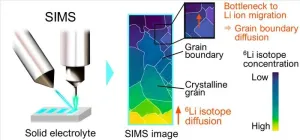
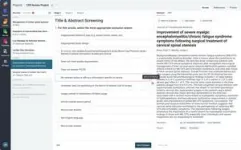
ELSE PRESS RELEASES FROM THIS DATE:
2024-02-27
Digital Science is pleased to announce that ReadCube, an award-winning leader in literature management and full-text document delivery, has launched a new solution for research-driven organizations – known simply as Literature Review by ReadCube.
Literature Review seamlessly integrates with ReadCube's premier literature management platform, trusted by over 650 research organizations globally. Known for its best-in-class user experience and robust literature workflows, ReadCube's newest solution delivers a turnkey end-to-end workflow for teams tasked with monitoring and analyzing published literature related ...
2024-02-27
Every year, over 100 million people worldwide suffer a stroke. Ischemic strokes (cerebral infarction) are the most common, but they can also occur "silently" and therefore often go undetected. This can result in serious illnesses such as dementia, depression or even suicide. In order to determine the risk of stroke at an early stage, Prof. Dr. Olga Golubnitschaja, head of the research group for 3P (predictive, preventive and personalized) medicine at the University Hospital Bonn (UKB), together with the University of Bonn and other authors from 25 institutions from 11 countries, has developed a holistic approach to health ...
2024-02-27
OAK BROOK, Ill. – As artificial intelligence (AI) is increasingly used in radiology, researchers caution that it’s essential to consider the environmental impact of AI tools, according to a focus article published today in Radiology, a journal of the Radiological Society of North America (RSNA).
Health care and medical imaging significantly contribute to the greenhouse gas (GHG) emissions fueling global climate change. AI tools can improve both the practice of and sustainability in radiology through optimized imaging protocols resulting in shorter scan times, improved scheduling ...
2024-02-27
February 27 — Five of the world’s leading research and education (R&E) networking organizations have joined forces to form MetrANOVA, a consortium for Advancing Network Observation, Visualization, and Analysis. Together, founding members Energy Sciences Network (ESnet), GÉANT, GlobalNOC at Indiana University, Internet2, and Texas Advanced Computing Center (TACC) operate and connect a dizzying number of national, regional, and local R&E networks — yet representing a portion of the decentralized fabric linking scientific researchers in hundreds of countries ...
2024-02-27
Patients who have drug-resistant tuberculosis (TB) have a similar microbiological response to bedaquiline-based second-line medications as patients with drug-sensitive TB taking first-line regimens, according to researchers at Weill Cornell Medicine in New York and GHESKIO Centers in Haiti. Second-line medications are those that are given when one or more of the drugs given first for the disease are not effective. The research could have implications for shortening the duration of treatment for drug-resistant TB, which currently ...
2024-02-27
In an effort to expedite its life-saving work, the Colorectal Cancer Alliance (Alliance) Project Cure CRC initiative is excited to open its Request for Proposals (RFP). Tens of millions of dollars will be available to researchers from around the world whose work aims to expedite colorectal cancer (CRC) research to a curable science. Beginning March 1, the program is accepting applications for one to three-year projects from qualifying professionals at research-based institutions and private companies. Priority will be given to proposals that focus on high-risk/high-reward projects to accelerate new CRC therapies and technologies from bench to bedside.
The ...
2024-02-27
First-of-its-kind study suggests increasing the percentage of youth in the United States who participate in sports to meet a Healthy People 2030 goal could improve children’s physical and mental health and save $80 billion.
Achieving the Healthy People 2030 youth sports participation goal could save the United States $80 billion in direct medical costs and productivity losses and deliver over 1.8 million more quality years of life to Americans, according to a study that will be published on Feb. 27 in the American Journal of Preventive Medicine.
Every decade since 1980, Healthy People has provided science-based, 10-year national objectives and ...
2024-02-27
Current lithium-ion battery technology does not have the energy density necessary to meet the demands for renewable energy. In theory, lithium-sulfur batteries could be a viable alternative with a higher specific capacity and energy density. However, sulfur has disadvantages that currently limit its practical adoption.
A comprehensive review published in Nano Research on February 8 outlines how metal organic frameworks-based cathode materials could improve the performance of lithium-sulfur batteries, making them a practical alternative to lithium-ion batteries.
“The ...
2024-02-27
Imagine technology as a race car speeding down a track – it can only go as fast as its engine allows. But just when it seemed like organic solar cells hit a roadblock, along comes 3PNIN, a game-changing molecule shaped like a propeller, ready to turbocharge their progress and break through barriers.
Organic solar cells (OSCs) represent the pinnacle of renewable energy, yet certain components have fallen significantly behind the trajectory of ongoing development. Particularly, cathode interfacial materials (CIMs) have failed to sustain ...
2024-02-27
BINGHAMTON, N.Y. -- Binghamton University, State University of New York researcher Karin Sauer is among 65 scientists elected as Fellows of the American Academy of Microbiology this year.
Fellows are elected by their peers based on their scientific achievements and original contributions to the field of microbiology.
Sauer’s lab aims to find ways to control communities of bacteria called biofilms and to curb their extraordinary resistance to antimicrobial agents. The team’s findings could have an impact on a wide range of healthcare practices, from ear infections to wound care.
“I’m honored and ...
LAST 30 PRESS RELEASES:
[Press-News.org] Imaging grain boundaries that impede lithium-ion migration in solid-state batteries
New technique developed to quantify ionic conductivity across grain boundaries






